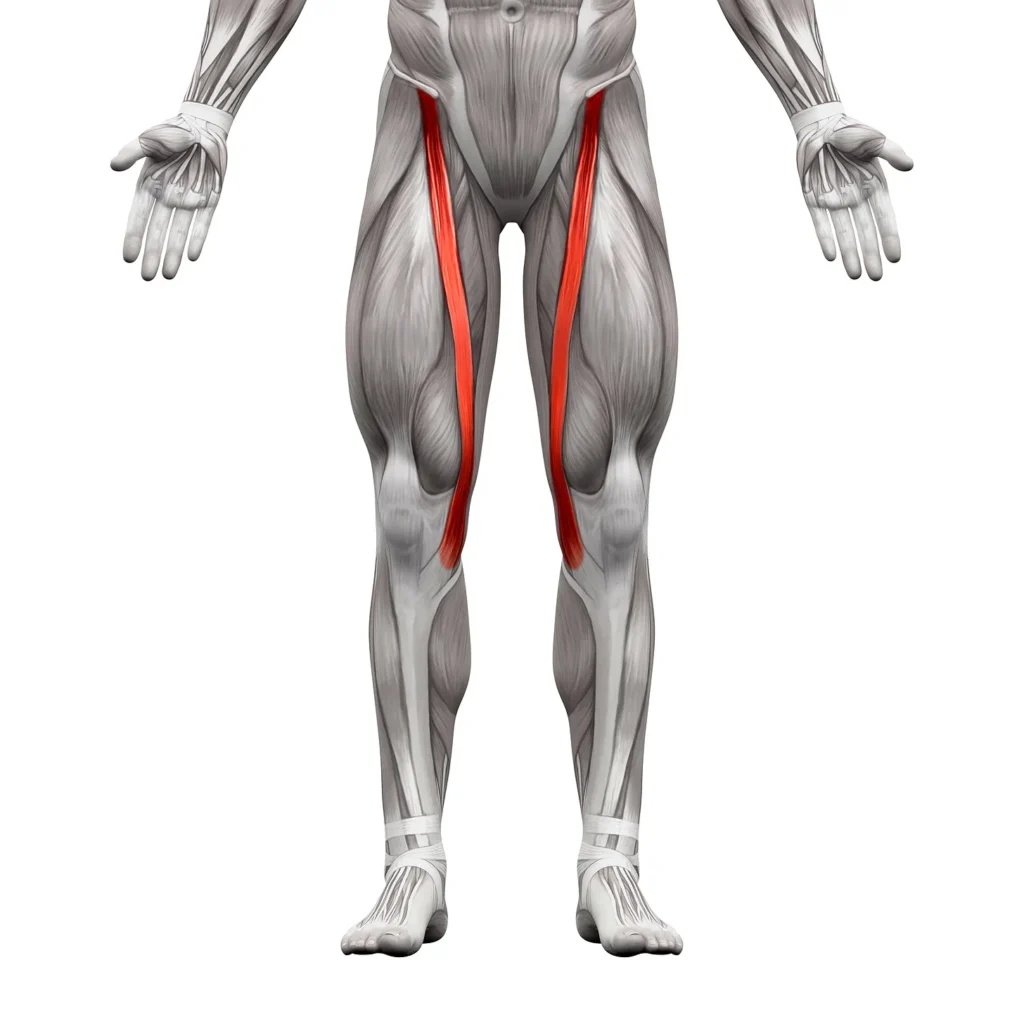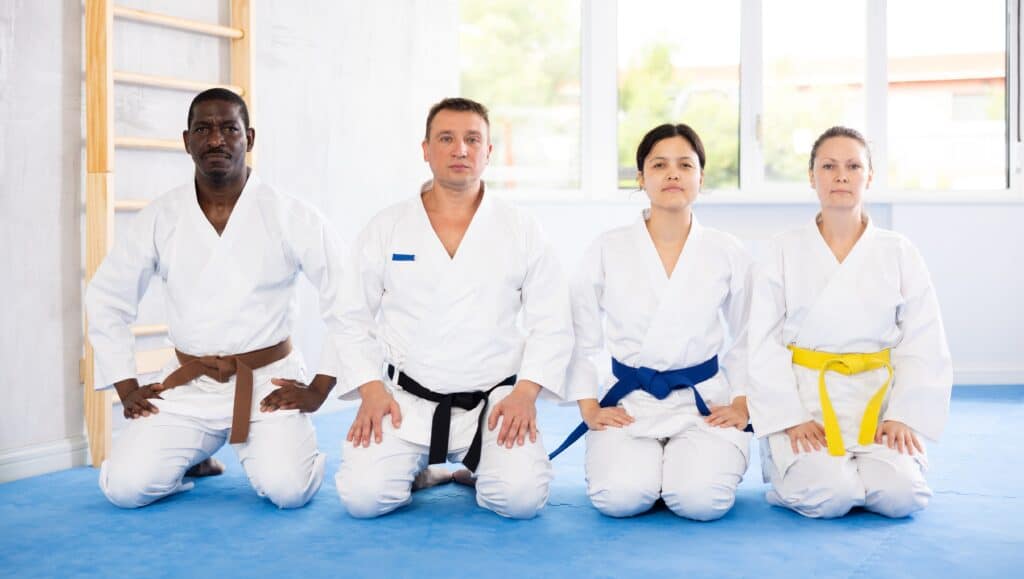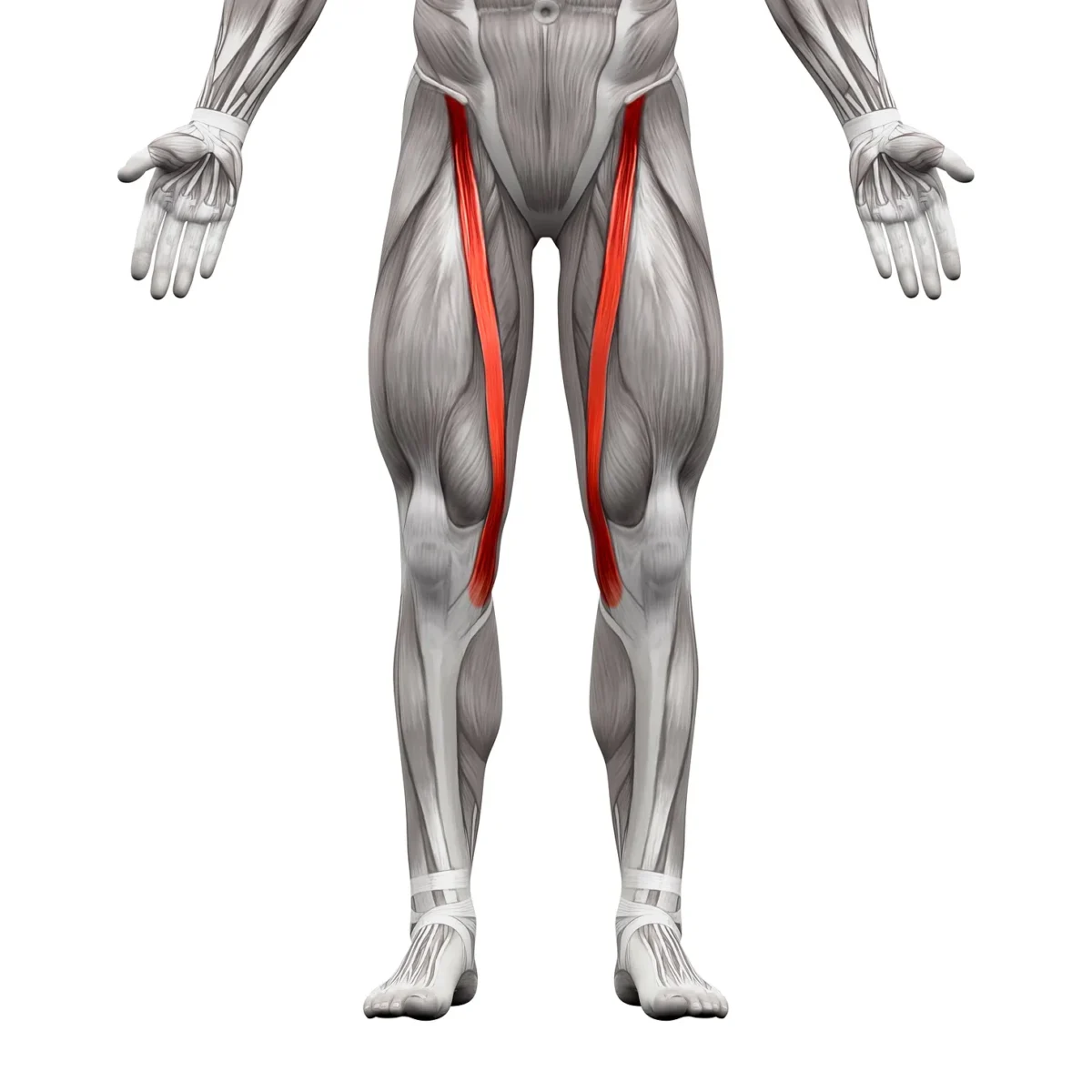Confession: last time when I discussed Q-angles I went kind of rogue and talked about it from the perspective of dynamic Q-angles, a term I stumbled upon, I liked and I embraced
This wasn’t wrong, just incomplete, so I am back for part II.
When Adarian and I talked about it later on our podcast, he said the term should actually be S-angle because the angle that you are looking for follows the line of the sartorius muscle.

*Random fact. The sartorius muscle usually originates at the ASIS, the prominent bone you can feel at the top front of your pelvis like you see in the picture, but sometimes it doesn’t. Sometimes it originates lower, closer to the pubic bone.
It may also split into two parts, instead of running in a nice neat line like you see in the picture. When it splits, one portion might insert on the TFL, or the outside of the hip, or the outside of the knee on the patellar tendon, or even behind the leg, joining with the semitendinosis, one of the hamstring muscles.
Back to the S-angle:
Most of the time, the sartorius runs from the outside, top of the pelvis to the inside of the knee (just like you see in the picture). If you were to follow the line the rest of the way down, you would end up with a connection at the inside of the ankle.
Another way to think of this is that paying attention to the way your sartorius runs will set your ankles. And when you set your ankles, magic happens.
Okay. Maybe not magic. But when your ankles are set you are in a really, really good position to feel balanced, stable, and like you could easily change direction at a moment’s notice.

*Random fact 2: Your sartorius is the longest muscle in your body. It’s also the front thigh muscle that is closest to the surface of the skin, which means you can easily see it in people with well developed legs, like distance runners. The muscle is named from the Latin word sartor which means tailor because tailors commonly sat in the position above. Notice how the men naturally set up a little bit wider than the women. This is because of their s-angles. What would happen if you tried to set the men up more narrow? What about if you set the women up more wide?
How does this apply to movement?
It applies a few different ways. One application can be seen in the video below, as Adarian demonstrates how the S-angle sets the transverse arch which helps you move down and forward (hello, running).
Try this:
- Split your feet. On your front leg, trace the line of your sartorius muscle from the top of the front hip bone down to the inside of the knee. Place your heel in line with the S-angle you just traced.
- Rotate the front shin forward, allowing your heel to lift so you can place weight in the transverse arch of the front foot. Rotate the front shin back to the starting position.
- Do this three or four times, exploring the weight shift into the transverse arch.
- The next time you shift your weight forward onto your transverse arch, pause and lift the back foot off the ground. Step the back foot forward, setting up for your S-angle. Repeat the exercise with the new front foot.
[Taken from Jenn & Adarian’s substack: Let Me Introduce You: Tales of Movement.]
Are you interested in more practical application of concepts? You can catch the replay of the Biomechanics Movement Summit here (where we did nothing but explore practical application of concepts).
Or you can join us (Adarian, Dawn Ross, and me) in person at The Netherlands Retreat April 24 – 28th for running, yoga, exploring connections, and more. Learn more here.

